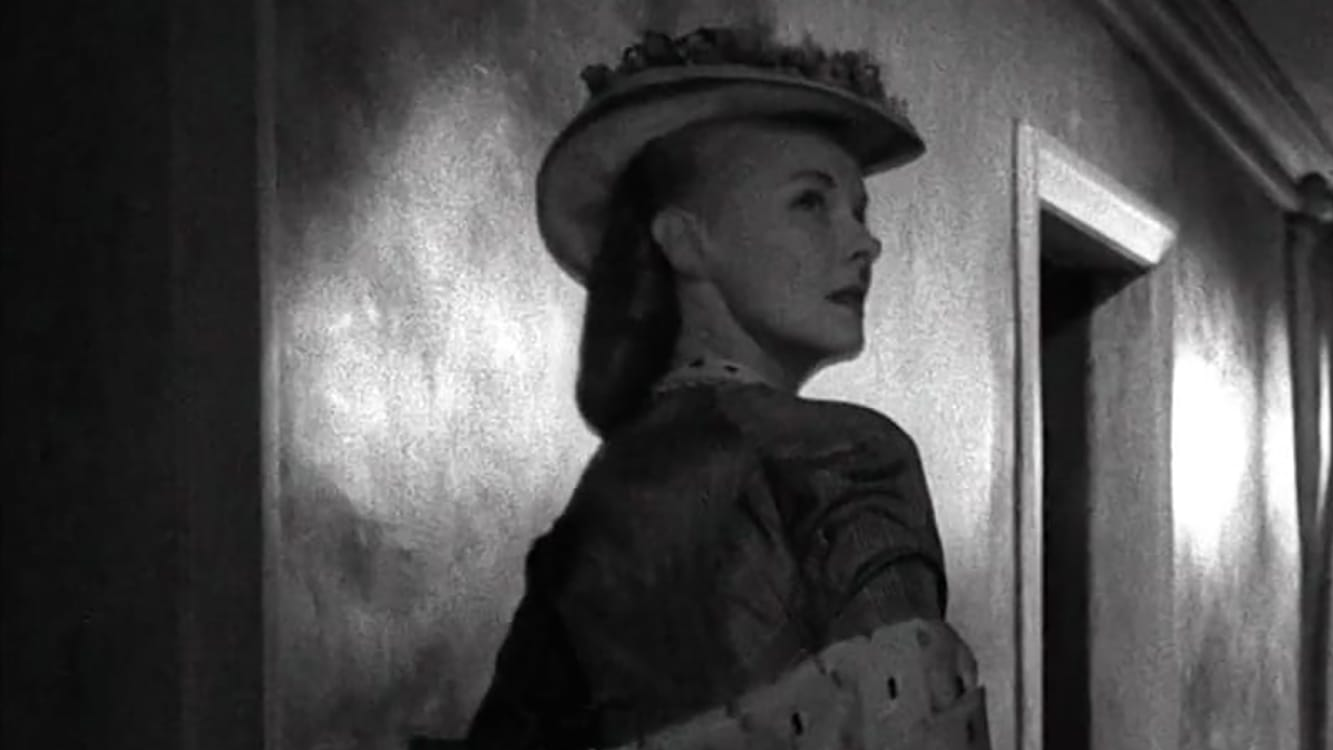Night has fallen in London, but the streets still teem with people. Through a second-story window, we watch as an elderly Jewish man who lives over a shop is stabbed to death and his rooms are set on fire. We see the shopkeeper fighting for his life, the knife, the fire—and we see the hulking, impassive man who has committed the crime. The murderer stumbles into the street, bumping into passersby, not seeming to know or care where he is. Blood seeps from under his hat and onto his collar. Someone asks if he’s all right, he mumbles a reply, and a shot from the murderer’s point of view shows that his vision is fogged; he can’t focus. But before anyone asks more questions about that telltale blood, the crowd is distracted by the flames of the burning shop, and the killer slips away.
Suppose I gave you that description, and told you the movie is in black and white, the music is Bernard Herrmann, the stars are Laird Cregar and Linda Darnell at her venomous best, and lastly, the film is from 1945. Then I ask, “What kind of film is it?” Your reply would most likely be “film noir.” Yet some might disagree, because the film—Hangover Square—is set in 1903, and these critics insist that true film noirs are set during the World War II and postwar era in which they were made. No cars, no fedoras, no postwar urban milieu? No dice.
Other connoisseurs of film noir disagree, and I am one. Recently on the Criterion Channel, I’ve been given the chance to program a collection of films that challenge and complicate the idea of what classic noir is. All are period films (save perhaps for Corridor of Mirrors, which nonetheless has a strong element of period-set flashbacks). The light that flickers around these shadowy tales of madness, murder, and twisted love isn’t filtered through a windshield or venetian blinds, nor does it come from a bare electric bulb in a cop’s interrogation room. The stories unfold by gaslight—the beautiful, dangerous way that most cities and towns were once lit, from the Victorian era into the Edwardian years.
 Top of page: Madeleine; above: Ladies in Retirement
Top of page: Madeleine; above: Ladies in Retirement
 Hangover Square
Hangover Square

 So Evil My Love
So Evil My Love
Before she won acclaim as a pioneering director, the Hollywood icon made her name as a powerfully vivid actor who brought grit and toughness to films by such masters as Raoul Walsh, Nicholas Ray, and Michael Curtiz.
Dennis Hopper’s bleakly nihilistic drama struggled to find an audience after it premiered at the Cannes Film Festival in 1980, but time has revealed it to be one of the most hardcore films about disaffected youth ever made.
From Kaneto Shindo to Kiyoshi Kurosawa, the masters of the genre over the past half-century have tapped into a deep well of cultural anxiety, exploring everything from the sins of their nation’s feudal past to the dangers of new technologies.
The director of such classic political docudramas as On the Bowery and Come Back, Africa defied the conventions of nonfiction filmmaking with his innovative approach to collaboration and performance.






